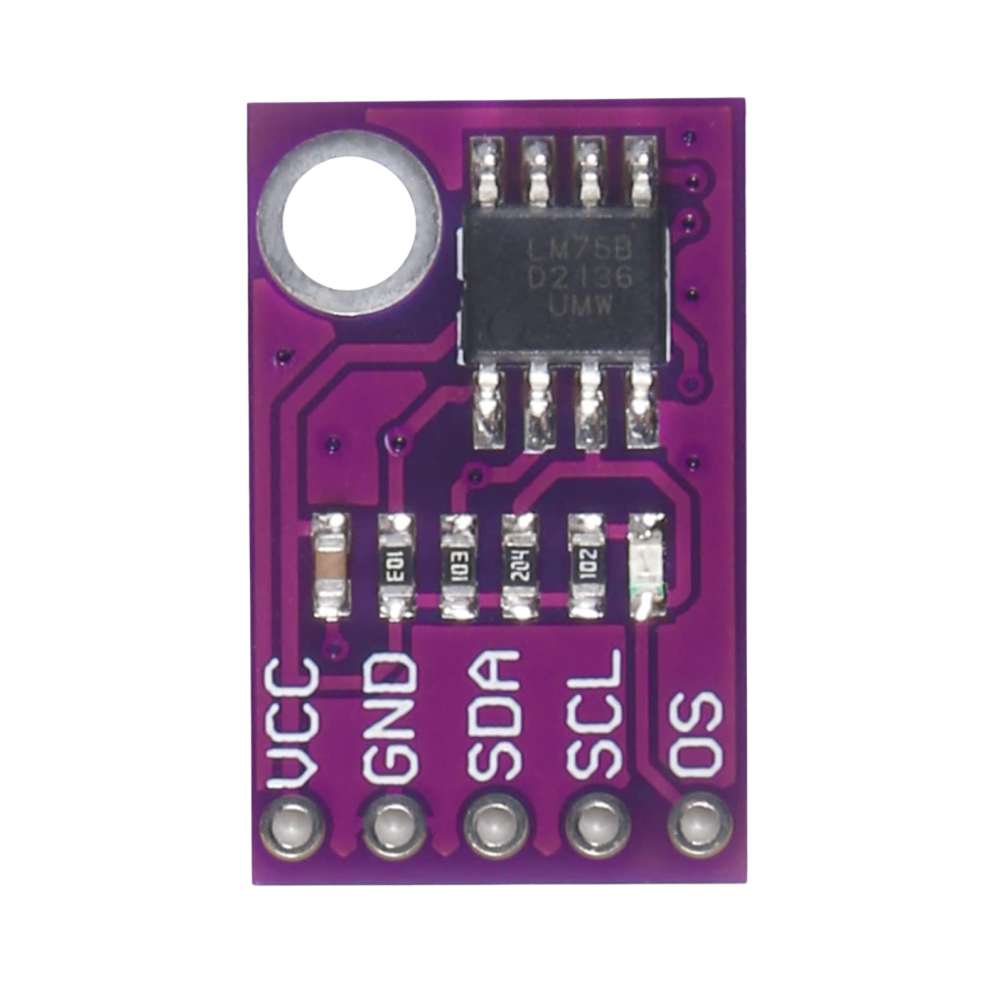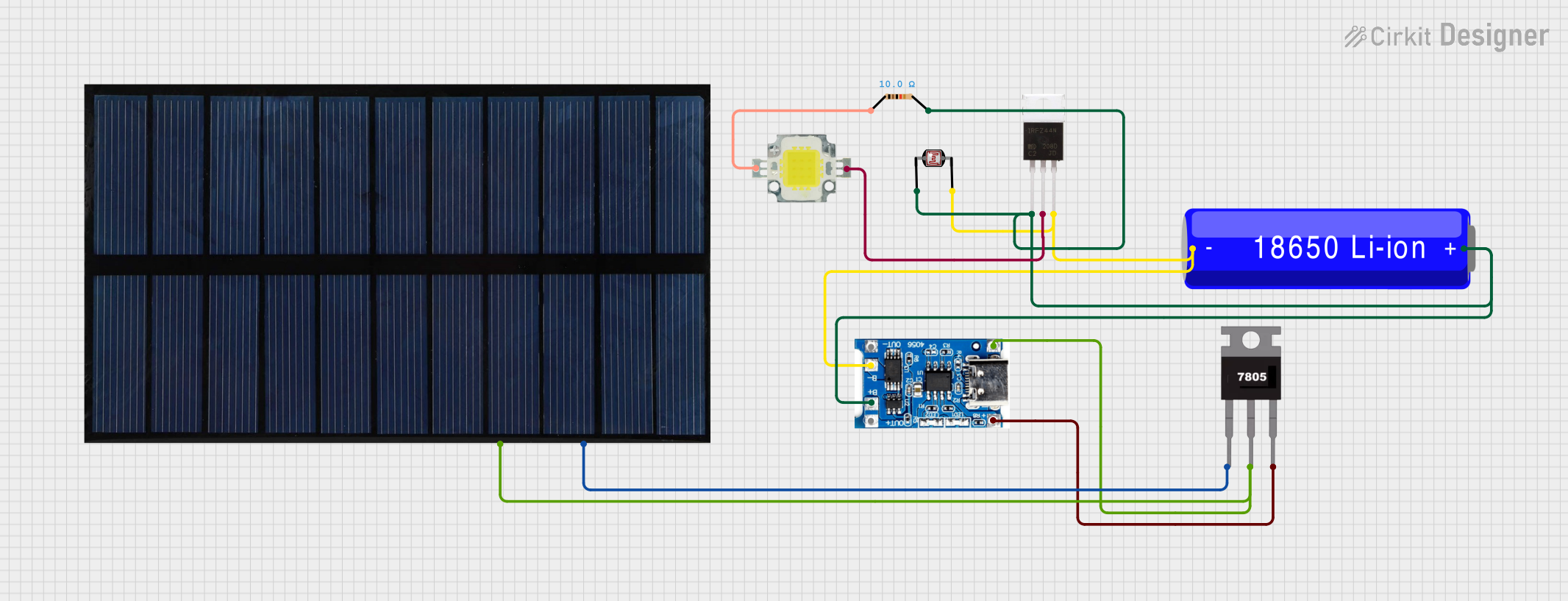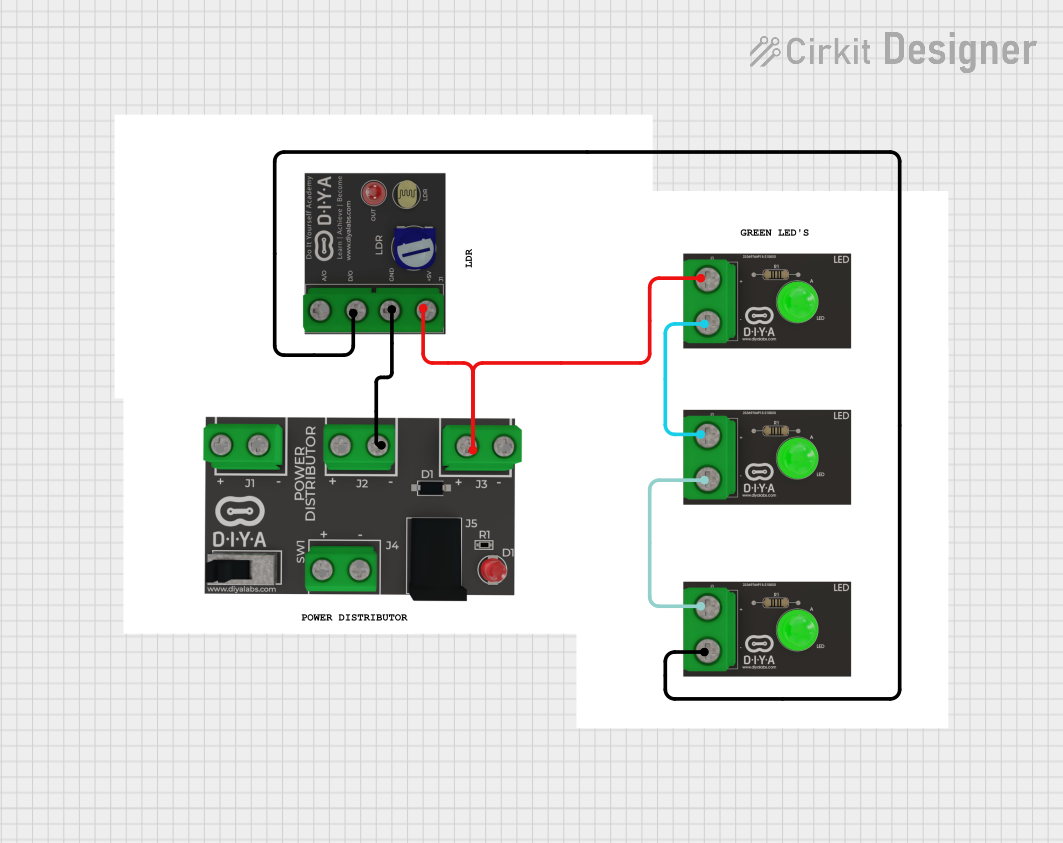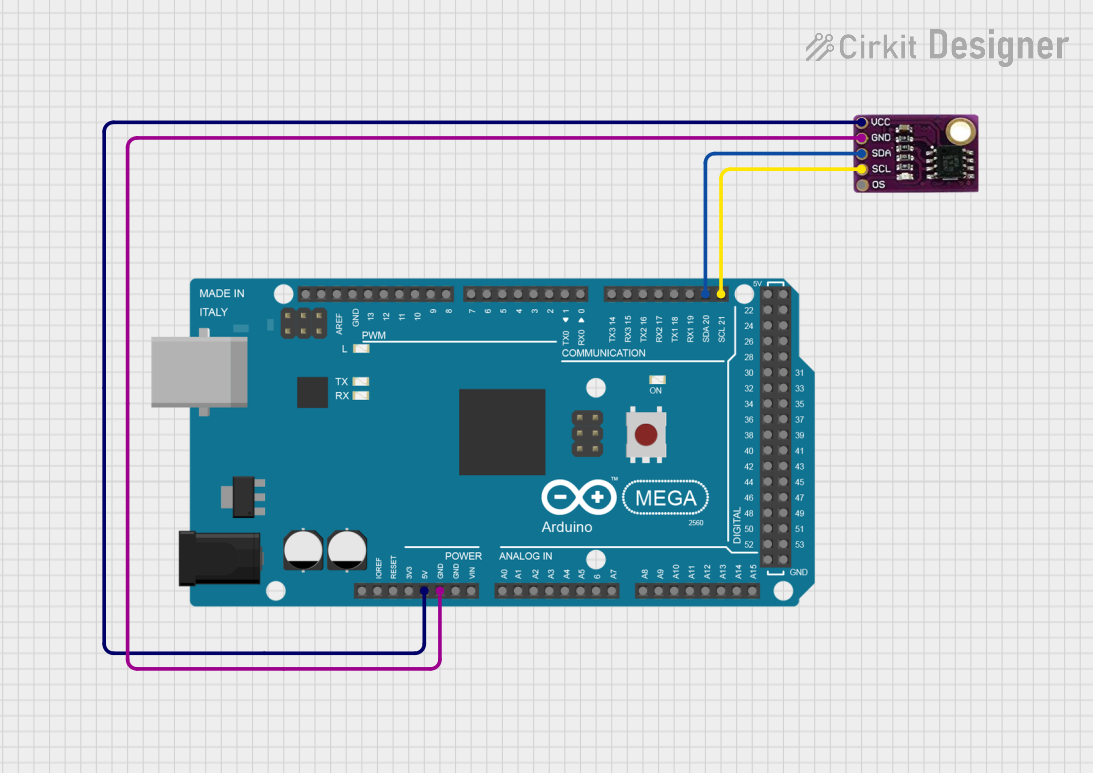
How to Use LM75A: Examples, Pinouts, and Specs

 Design with LM75A in Cirkit Designer
Design with LM75A in Cirkit DesignerIntroduction
The LM75A is a digital temperature sensor with an I2C interface, designed for precise temperature measurement and monitoring. It operates over a wide temperature range of -55°C to +125°C with a resolution of 0.5°C. The LM75A includes programmable over-temperature and under-temperature alarms, making it ideal for applications requiring temperature control and safety monitoring.
Explore Projects Built with LM75A

 Open Project in Cirkit Designer
Open Project in Cirkit Designer
 Open Project in Cirkit Designer
Open Project in Cirkit Designer
 Open Project in Cirkit Designer
Open Project in Cirkit Designer
 Open Project in Cirkit Designer
Open Project in Cirkit DesignerExplore Projects Built with LM75A

 Open Project in Cirkit Designer
Open Project in Cirkit Designer
 Open Project in Cirkit Designer
Open Project in Cirkit Designer
 Open Project in Cirkit Designer
Open Project in Cirkit Designer
 Open Project in Cirkit Designer
Open Project in Cirkit DesignerCommon Applications
- HVAC systems for temperature regulation
- Over-temperature protection in electronic devices
- Industrial temperature monitoring
- Battery management systems
- Home automation and IoT devices
Technical Specifications
Key Technical Details
- Temperature Range: -55°C to +125°C
- Resolution: 0.5°C
- Supply Voltage: 2.7V to 5.5V
- Communication Protocol: I2C (up to 400 kHz)
- Accuracy: ±2°C (typical) from -25°C to +100°C
- Alert Function: Programmable over-temperature and under-temperature alerts
- Power Consumption: 300 µA (typical operating current)
Pin Configuration and Descriptions
The LM75A is typically available in an 8-pin package. Below is the pinout and description:
| Pin Number | Pin Name | Description |
|---|---|---|
| 1 | SDA | Serial Data Line for I2C communication. |
| 2 | SCL | Serial Clock Line for I2C communication. |
| 3 | OS | Over-temperature Shutdown (alert output, open-drain). |
| 4 | GND | Ground. |
| 5 | A2 | Address Pin 2 (used to set the I2C address). |
| 6 | A1 | Address Pin 1 (used to set the I2C address). |
| 7 | A0 | Address Pin 0 (used to set the I2C address). |
| 8 | VCC | Power Supply (2.7V to 5.5V). |
I2C Address
The LM75A's I2C address is determined by the states of the A2, A1, and A0 pins. The base address is 0x48, and the full address is calculated as:
Address = 0x48 + (A2 * 4) + (A1 * 2) + A0
For example:
- If A2 = 0, A1 = 0, A0 = 1, the address is
0x49.
Usage Instructions
How to Use the LM75A in a Circuit
- Power Supply: Connect the VCC pin to a 3.3V or 5V power source and the GND pin to ground.
- I2C Communication: Connect the SDA and SCL pins to the corresponding I2C lines of your microcontroller. Use pull-up resistors (typically 4.7 kΩ) on both lines.
- Address Configuration: Set the A2, A1, and A0 pins to configure the I2C address. These can be connected to VCC (logic high) or GND (logic low).
- Alert Pin (Optional): Connect the OS pin to a microcontroller GPIO pin or an external circuit to monitor over-temperature alerts.
Best Practices
- Use decoupling capacitors (e.g., 0.1 µF) between VCC and GND to reduce noise.
- Ensure proper pull-up resistors are used on the I2C lines for reliable communication.
- Avoid placing the LM75A near heat sources to ensure accurate temperature readings.
Example: Connecting LM75A to Arduino UNO
Below is an example of how to interface the LM75A with an Arduino UNO and read temperature data:
Circuit Diagram
- Connect
VCCto the Arduino's5Vpin. - Connect
GNDto the Arduino'sGNDpin. - Connect
SDAto the Arduino'sA4pin. - Connect
SCLto the Arduino'sA5pin. - Use 4.7 kΩ pull-up resistors on the SDA and SCL lines.
Arduino Code
#include <Wire.h>
#define LM75A_ADDRESS 0x48 // Default I2C address of LM75A
void setup() {
Wire.begin(); // Initialize I2C communication
Serial.begin(9600); // Start serial communication for debugging
}
void loop() {
float temperature = readTemperature();
Serial.print("Temperature: ");
Serial.print(temperature);
Serial.println(" °C");
delay(1000); // Wait 1 second before the next reading
}
float readTemperature() {
Wire.beginTransmission(LM75A_ADDRESS); // Start communication with LM75A
Wire.write(0x00); // Point to the temperature register
Wire.endTransmission();
Wire.requestFrom(LM75A_ADDRESS, 2); // Request 2 bytes from LM75A
if (Wire.available() == 2) {
// Read the two bytes of temperature data
uint8_t msb = Wire.read(); // Most significant byte
uint8_t lsb = Wire.read(); // Least significant byte
// Combine the bytes and convert to temperature
int16_t rawTemp = (msb << 8) | lsb;
rawTemp >>= 7; // Right shift to remove unused bits
return rawTemp * 0.5; // Each bit represents 0.5°C
}
return NAN; // Return NaN if no data is available
}
Troubleshooting and FAQs
Common Issues
No Temperature Data Received
- Cause: Incorrect I2C address or wiring.
- Solution: Verify the I2C address based on the A2, A1, and A0 pin configuration. Check the SDA and SCL connections and ensure pull-up resistors are in place.
Inaccurate Temperature Readings
- Cause: Heat sources near the sensor or poor decoupling.
- Solution: Place the LM75A away from heat-generating components. Add a 0.1 µF capacitor between VCC and GND.
Alert Pin Not Functioning
- Cause: Incorrect configuration of the OS pin or alert thresholds.
- Solution: Verify the alert thresholds are correctly programmed via the LM75A's configuration register.
FAQs
Q: Can the LM75A operate at 3.3V?
A: Yes, the LM75A supports a supply voltage range of 2.7V to 5.5V.Q: What is the default I2C address of the LM75A?
A: The default address is0x48when A2, A1, and A0 are all connected to GND.Q: How do I change the temperature alert thresholds?
A: The alert thresholds can be configured by writing to the LM75A's over-temperature and hysteresis registers via I2C.Q: Can the LM75A measure negative temperatures?
A: Yes, the LM75A can measure temperatures as low as -55°C. Negative temperatures are represented in two's complement format.